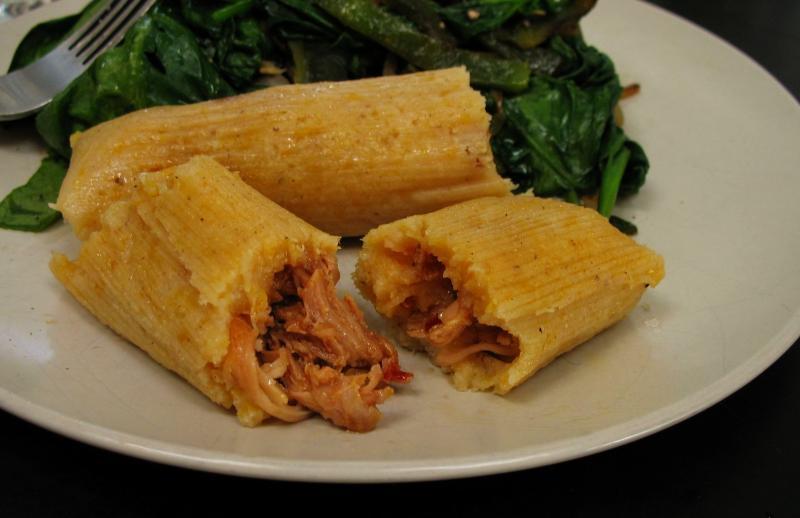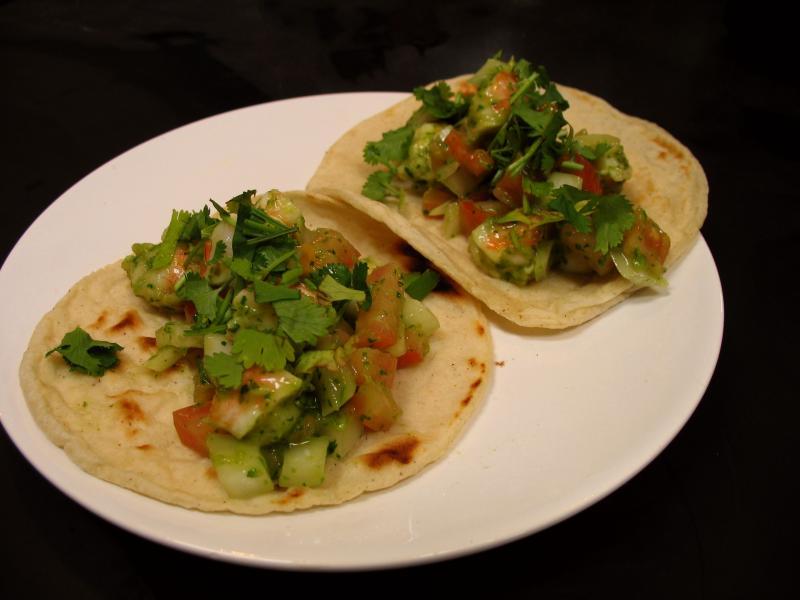
cadmond
participating member-
Posts
12 -
Joined
-
Last visited
Content Type
Profiles
Forums
Store
Help Articles
Everything posted by cadmond
-
I do the same thing and have never looked back, but keep in mind that it does use a separate bowl and cup for the milk (unless you just sit down with the box of cereal and the whole carton of milk) Of course, my brother takes it to the next extreme and uses his mouth as the "second bowl" by eating the dry cereal and drinking some milk out of a glass immediately afterward, but that's a little too weird for me...
-
You'll probably want to avoid nameko and enoki just because they are too small (and slimy, in the former's case), but I feel like shiitake, eringi and maitake would all work. Depending on your grocery store, you should be able to find button mushrooms, and possibly even cremini as well, which would be more traditional to the French sauces, but if you want to experiment with Japanese mushrooms, I think that shiitake are probably your best bet. They seem to have more flavor than maitake and eringi to me. Matsutake would probably just be wasted on a sauce with a lot of other ingredients going on.
-
Even when I was living in Japan with an abundance of cheap, delicious fish available, I still bought canned fish on occasion instead, so this has me thinking: is canned just convenience? I admit to using (and loving) canned anchovies and sardines, and can't help but wonder if it's specifically for that slightly dried out texture that most canned fish have... You know, the better to soak up flavorful liquids or dressings with.
-
Sorry, this doesn't really apply to just one daikon, but here's a link to an English recipe that looks pretty authentic to me. Takuan recipe I'd be curious if anyone knows any "cheater" takuan recipe, maybe more like the brine based pickling that the West is more accustomed to?
-
I don't have a recipe, but one thing to keep in mind is that takuan (from what I remember) is made from whole daikon that has been hung outside to dry (it gets all floppy and leathery) before pickling. I'm not exactly sure on the details (like days spent outside) or even if this is part of the process today, and there might be recipes that don't involve this step. I suppose you could use a already cut radish, but I remember whole ones being used. Good luck with this endeavor! I'll look around for some more information if I can.
-
This isn't really a suggestion as something to make (it's kind of out there), but I like it. Occasionally... It's a Japanese dish called hiyajiru (冷汁), and it's basically a cold fish puree soup... I know... You basically take cooked fish meat, and grind (I suppose you could probably use a blender) it with miso and sesame, then thin the paste with dashi or maybe just water, and then top it with cucumber, tofu, ginger... whatever you like really. But those are more like just the guidelines, and it varies pretty widely from family to family. Anywho, not a real recommendation for a cold soup to make unless you feel like doing something wierd, but I thought I'd bring it up to show that cold soup need not be limited to vegetable based dishes.
-
This is probably variable on where you live, but where I live: Tamales 99% of the time the restaurant tamales are dry and unpleasant. while the ones I make at home are consistently moist and delicious (and lets be honest, I barely know what I'm doing when I make them) I'm really not sure why my local restaurants have this problem when even the tamales I'm freezing and reheating are quite good. They only take 10 minutes or so to reheat in a steamer from the freezer, but I'm imagining that restaurants hold them at temp for service. Anyone know why are restaurant tamales so bad?
-
Cooking from "Fiesta at Rick's" by Rick Bayless
cadmond replied to a topic in Mexico: Cooking & Baking
I made the Impossible Cake (pg 291) for a party last night, and while I didn't take pictures I have a few thoughts on it 1) This isn't Rick's fault, but don't make the mistake (or be lazy + cheap like me) of baking this in a springform pan. It's a good thing that I didn't take a picture, because it sure wasn't pretty. Actually, the problem is actually less with aesthetics, and more with leaking. 2) I'm not sure if I personally don't like cajeta, or if the stuff I bought was funky. Most of it leaked out of the springform though, so I replaced it with dulce de leche and everything turned out fine. Does anyone else feel that cajeta has a very un- dulce de leche flavor? I was expecting otherwise is all, but I suppose the more you concentrate the flavor of goats milk the more apparently goaty it would be... 3) I would have baked this just for the novelty of watching a cake "crust" congeal on top of a flan. Oh, and to say the name. "Chocoflan!" The cake was well enjoyed (though I'm a self critical cynic when it comes to these things, and question whether drunken revelers are the best judges of quality), and I think I would definitely make it again but... Maybe just not Rick's version. He's not really known for being a pastry chef, and honestly it was good, but not spectacular in my mind. The coffee addition certainly upped the game however... Does anyone know of any books on Mexican baking out there? -
This year I volunteered at a small rural bakery/farm operation in Japan for a couple of weeks, and at some point the man who ran the place went on a pretty long rant on the "yeast food" that is used in the commercial bakeries (like Yamazaki-pan). He was pretty adamant against using, or even consuming stuff that had those additives in it, but as far as I could tell from research on just what "yeast food" is, its basically just nutrients and things that ensure the yeast are well fed, used to maintain consistent risings and whatnot. I'm not however if "yeast food" would be considered the same thing as dough improvers/conditioners in the US. At any rate, he wasn't so far into it that he avoided using baking soda/powder or gelatin If there are any chemist/baker types who would want to cross reference, here's the list of chemicals listed on the Japanese wikipedia for what is used as "yeast food" over there: ammonium chloride magnesium chloride Sodium gluconate potassium gluconate ammonium carbonate Potassium carbonate calcium carbonate ammonium sulfate Calcium sulfate magnesium sulfate (these next ones I'm just piecing together from my high school chemistry knowledge, so they might written be wrong) diammonium hydrogenphosphate tricalcium phosphate ammonium dihydrogenphosphate calcium hydogenphosphate calcium dihydrogenphosphate also vitamin C(s) as antioxidants + enzymes (apparently there's more than one type?) I'd definitely be curious as to what the differences are between America and Japan on this front. Also, does anyone know if these bakers are against using them for health reasons, or because you can use the additives to skimp on some other part of the process and still make up for it? The baker I talked to said for health, but I imagine it could go either way (or neither, maybe it's just a marketing thing) It's funny how large a gap there is between the bad food in Japan, and the good food. For a cuisine known for treating ingredients gently and simply, it's still the country that brought us instant noodles, msg, and so on.
-
Cooking from "Fiesta at Rick's" by Rick Bayless
cadmond replied to a topic in Mexico: Cooking & Baking
Well, like I said I think something went wrong in mine. The deflation part meant they weren't nearly as light as I think they could have been. I'm thinking I might have added too much liquid to the second beating, or maybe just butternut squash and double beating aren't meant to go together. That said, the texture was certainly quite good, but nothing so different from my experience with single-beaten tamales. One of my problems with tamale recipes in Rick's books is they always seem to call for way way way too many corn husks. I only soaked 1/3rd of an 8 oz package for these (the recipe called for the whole bag), and I ended up using only half. Am I just in an area with awesome corn husks (not likely, Seattle...) or do others have similar experiences like this? I understand the better safe than sorry thing, but it seems like a waste at some point (I'm going to see if freezing the remainders works) -
Cooking from "Fiesta at Rick's" by Rick Bayless
cadmond replied to a topic in Mexico: Cooking & Baking
The fish looks great Chris. And I see what you're saying about being underwhelmed about the photos, certainly compared to other cookbooks. But for a Bayless cookbook? Anyways, I finally got around to making some tamales from this book. I decided to go with the Butternut Tamales with Chipotle Chicken (pg. 224-225) because they seemed like the best candidate from the corn-husk wrapped variety that would freeze well (better than the cheese ones anyways). I'm not sure what went wrong, if anything, with these, but when I opened up the steamer half way through, they had collapsed, almost like some sort of over-whipped souffle, and they were still super runny. I'm not sure if this is because of the double beating process incorporating too much liquid, or from a misstep on my part, but it was pretty alarming when I saw they had sunk like that. They eventually turned out fine and are really quite good, but I can't help but notice the distinct lack of butternut squash flavor. Maybe it's just there to make them more moist? Either way, next time I think I'll try to make them skinnier and longer before they steam so that when they shrink down they'll look a little more normal, and not like fat, stubbly little cigars. Little view of the cross section. -
Cooking from "Fiesta at Rick's" by Rick Bayless
cadmond replied to a topic in Mexico: Cooking & Baking
I've been on a tamale-making tear from his other book, Authentic Mexican, for a bit now, but before I tackle the tamales in "Fiesta at Ricks" I figured I'd use up some leftover shrimp and avocado in his Avocado-Dressed Shrimp a la Mexicana (pg. 146) to fill some tacos with. I feel like more avocado would've been good to make it a little richer, but it was tasty overall. The leftovers are about to go on tostadas for lunch. Overall I'm liking the book, despite only having made a couple of the recipes. Maybe it's all the food porn...


